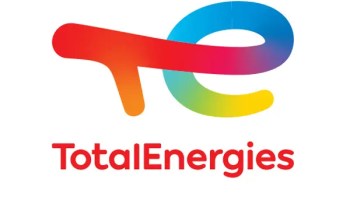Nigeria’s headline inflation rate increased to 21.47 per cent on a year-on-year basis in November, according to the National Bureau of Statistics (NBS).
This is even as the World Bank said that Nigeria is in a worsening situation, with economic performance becoming weaker as inflation persists.
The Bank revealed this in its newly released Nigeria Development Update, which was launched in Abuja on Thursday alongside the Nigeria Country Economic Memorandum.
The NBS in a report also released on Thursday on its Consumer Price Index (CPI) and Inflation for November 2022, stated that the increase is 6.07 percent points higher compared to the 15.4 percent recorded in November 2021. Meaning that in November 2022, the general price level was 6.07 percent higher relative to what it was in November 2021.
Some of the factors responsible for the rise were increase in import costs occasioned by persistent currency depreciation and general increase in production costs occasioned by the increase in energy cost.
According to the report when it is compared on a month-on-month basis, headline inflation rate in November was 1.39 percent, which was 0.15 percent higher than the rate recorded in October at 1.24 percent.
“This means that in November, the general price level was 0.15 percent higher relative to October,’’ it added.
In this case, the report attributed the likely factor responsible for the increase in the monthly inflation rate to the sharp increase in demand usually experienced during the festive season.
The percentage change in the average CPI for the 12 months ending November 2022 over the average of the CPI for the previous 12 months period was 18.37 per cent, the report stated.
“This indicates a 1.39 per cent increase compared to the 16.98 per cent recorded in November 2021.
It said increases were recorded in all Classification of Individual Consumption by Purpose (COICOP) divisions that yielded the headline index.
Food inflation rate in November was 24.13 per cent on a year-on-year basis, and was 6.92 percent higher compared to the rate recorded in November 2021 at 17.21 percent.
“The rise in food inflation is caused by increases in the prices of bread and cereals, potatoes, yams and other tubers, and oil and fat,’’ it stressed.
It added that on a month-on-month basis, food inflation rate in November was 1.40 percent, which was a 0.17 percent rise compared to the rate recorded in October 2022 at 1.23 percent.
It attributed the increase to a rise in prices of some food items like oil and fat, fruit, fish, and tubers.
“The average annual rate of food inflation for the 12 months ending November 2022 was 20.41 percent.
“It was a 0.21 percent points decline from the average annual rate of change recorded in November 2021 at 20.62 percent.
“All items, less farm produce or core inflation, which excludes the prices of volatile agricultural produce stood at 18.24 percent in November 2022 on a year-on-year basis.
“This increased by 4.39 percent compared to 13.85 percent recorded in November 2021,’’ it stated.
On a month-on-month basis, the core inflation rate was 1.67 percent in November 2022, which was a 0.74 percent rise compared to what it stood at in October 2022 at 0.93 percent.
The highest increases were recorded in the prices of gas, liquid fuel, airfares, vehicle spare parts, and solid fuel, it added.
“The average 12-month annual inflation rate was 15.69 per cent for the 12 months ended November; this was 2.73 per cent points higher than the 12.96 percent recorded in November 2021.
“On a year-on-year basis urban inflation rate in November 2022 was 22.09 per cent, which was 6.17 per cent higher compared to the 15.92 per cent recorded in November 2021.
“On a month-on-month basis, urban inflation rate was 1.50 per cent in November 2022; this was a 0.16 per cent increase compared to October 2022 at 1.33 per cent,’’ it stated.
The NBS stated also that the corresponding 12-month average for urban inflation rate was 18.9 per cent in November 2022.
“This was 1.35 per cent higher compared to the 17.55 per cent reported in November 2021.
“On a year-on-year basis in November 2022, rural inflation rate was 20.88 per cent, which was 5.99 per cent higher compared to the 14.89 per cent recorded in November 2021.
“On a month-on-month basis, rural inflation rate in November 2022 was 1.3 per cent, which increased by 0.14 per cent compared to October 2022 at 1.16 per cent.
“Corresponding 12-month average for rural inflation rate in November was 17.88 per cent, which was 1.46 per cent higher compared to the 16.42 per cent recorded in November 2021,’’ it stated.
World Bank
Meanwhile, the World Bank has said that Nigeria is in a worsening situation, with economic performance becoming weaker as inflation persists.
The bank revealed this in its newly released Nigeria Development Update, which was launched in Abuja on Thursday alongside the Nigeria Country Economic Memorandum.
The NDU report noted, “Nigeria is in a challenging and deteriorating economic situation. Nigeria’s economic performance has weakened since the previous Nigeria Development Update was published in June 2022 under the title of ‘The Continuing Urgency of Business Unusual’.”
The financial institution also cut Nigeria’s 2022 growth forecast to 3.1 per cent from a previous forecast of 3.8 per cent.
It said that the revision was due to slow economic growth in the third quarter from a year earlier, dragged down by the oil sector and a weak performance in other areas of the economy.
The bank further forecast growth to slow by 2.9 per cent in 2023.
The report read, “Nigeria’s economic output growth has slowed and the World Bank is lowering its growth projections. Real gross domestic product at market prices growth in the third quarter of 2022 was 2.4 percent year-on-year, on the back of a continued contraction in oil output (-22.7 per cent y-o-y) and slowing non-oil growth (4.3 per cent y-o-y, down from 4.8 per cent y-o-y in Q2 2022). The World Bank now projects that real GDP will grow by 3.1 per cent in 2022 and 2.9 per cent in 2023–24, 0.3 of a percentage point lower than the previous projections at the time of the June 2022 NDU.”
Wages lose 35% value
The World Bank Lead Economist for Nigeria, Alex Sienaert, noted while making the presentation that Nigerian minimum wage, which was worth N30,000 in 2019, could be valued at N19,355 today.
This means that there had been a loss of 35.48 per cent value between 2019 and 2022 as inflation erodes Nigerians’ purchasing power.
Sienaert observed that, the cumulative inflation between 2019 and 2022 was 55 per cent.
He said that the rising inflation had led to a slump in the purchasing power of Nigeria.
In the NDU report, it was noted that consumer price inflation had heightened, making it one of the highest in the world.
The report noted that although the CBN was making efforts to curb the rising inflation by increasing interest rates, its funding of fiscal deficit through the ways and means advances had made things difficult.
Multiple challenges
“The rate of consumer price inflation has surged and is currently one of the highest globally. The consumer price index, already increasing at a high rate, accelerated in 2022 through October, to be up 21.1 per cent y-o-y, a 17-year high.
“High inflation has been persistent in Nigeria for the past two decades, but since 2019 inflation has increased substantially, driven by the multiple exchange rates and exchange rate depreciation in the parallel market, intensified trade restrictions, and the monetization of the public deficit by the Central Bank of Nigeria.
“In 2022, this has been exacerbated by the spike in global food and energy prices due to the war in Ukraine and global supply disruptions. Since May 2020, the CBN has responded by tightening monetary policy, increasing the policy rate by 500 basis points and increasing the cash reserve requirement by 500 bps. However, the disinflationary impact of these measures has been weakened by continuing monetization of the fiscal deficit, sector-specific subsidized credit provisions, and imported food and energy cost increases.”
The Punch also reported that the World Bank report also noted that Nigeria’s exchange rate policy settings are stifling business activity, investment and growth, and amplifying macroeconomic risks.
More 5m poor Nigerians
The World Bank also noted that inflation pushed five million Nigerians into poverty between January and October this year.
“As many as 5 million Nigerians have been pushed into poverty as a result of inflation in 2022. The World Bank estimates that between 2020 and 2021, inflation pushed about eight million more Nigerians below the poverty line, increasing the total number of poor people to about 90 million. Higher inflation in 2022 is estimated to have pushed an additional five million Nigerians into poverty between January and September 2022, mainly through higher prices of local staples, such as rice, bread, yam, and wheat, especially in non-rural areas.”
The Washington-based bank also said Nigeria’s economy was highly vulnerable to shocks.
It warned that if inflation and unemployment continued to trendhigh, insecurity would worsen in the country.
The report read, “Nigeria’s economy will remain highly vulnerable to both external and domestic shocks, and shocks will be exacerbated in the absence of urgently needed policy reforms to reduce inflation, increase fiscal revenues, and shift toward a market-responsive exchange rate.
“If inflation and unemployment remain high, this will exacerbate domestic security risks, which in turn could further reduce economic growth.”
According to the bank, high inflation had deteriorated in Nigeria since 2020, corroding citizens’ purchasing power and increasing poverty.
“Nigeria’s chronic, high inflation has worsened since 2020, eroding the purchasing power of Nigerians and increasing poverty. Since October 2019, Nigeria’s inflation has been persistently high. Inflation accelerated after the closure of Nigeria’s land borders in October 2019, and increased steadily throughout 2020 due to domestic supply constraints related to the COVID-19 pandemic. In 2021, at an average of 17 percent, inflation was above that of the previous four years and among the highest rates in the world.”
“During the course of 2020 and 2021, inflation was mainly driven by higher food prices, especially for staples such as bread and cereals, potatoes, yams, and other tubers, meat, fish, fruits, and oils and fats. The pace of price increases eased somewhat in 2021 as the economy reopened and domestic manufacturing and agricultural production increased, but inflation remained high at an average of 17 percent y-o-y,” the report added.
Source:Olusola Bello





